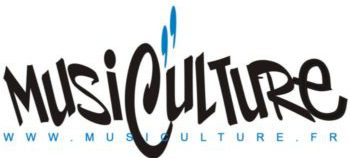 Ce guitariste londonien fut l’un des leaders du courant « acid-jazz ».
Ce guitariste londonien fut l’un des leaders du courant « acid-jazz ».
Après les années « acid-jazz », il ne cessera de fusionner sa musique avec d’autres genres comme le hip-hop, par exemple. Pas de frontières pour cet artiste.
Fils d’un prêtre, ses origines musicales sont dans le gospel. Mais très vite, il est touché par le funk des années 80 et il explore de nouvelles voies. Ses guitaristes modèles sont Charlie Christian, Wes Montgomery et Grant Green. Puis il est touché par le hip-hop, un élément constant de sa musique.
La consécration a lieu en 1992 avec l’album « Antidote » sur lequel figure sa reprise du « So What » de Miles Davis, gros succès de l’année et du courant « acid-jazz ». L’année suivante, il fait partie du projet « Jazzmatazz » du rapper Guru. Son jeu de guitare sur l’album est omnipresent et l’oeuvre connaitra un énorme succès en 1993. La même année sort son deuxième opus baptisé « Quiet Revolution ». Ensuite, il suivra un parcours sans succès majeur mais toujours intéressant.
Ronny Jordan nous a quitté le 14 janvier 2014, trop tôt.
Discographie
 The Antidote (1992, 4th & Broadway)***.
The Antidote (1992, 4th & Broadway)***.
[jwplayer mediaid= »1873″]
 The Quiet Revolution (1993, 4th & Broadway)***.
The Quiet Revolution (1993, 4th & Broadway)***.
 Jazzmatazz, Volume 1 (1993, Chrysalis)***.
Jazzmatazz, Volume 1 (1993, Chrysalis)***.
 Stolen Moments, Red Hot & Cool » (1994, GRP)***.
Stolen Moments, Red Hot & Cool » (1994, GRP)***.
 Light To Dark (1996, Island)**.
Light To Dark (1996, Island)**.
 A Brighter Day (1999, Blue Note)**.
A Brighter Day (1999, Blue Note)**.
 Off The Record (2001, Blue Note)*.
Off The Record (2001, Blue Note)*.
 At Last (2003, N-coded Music)*.
At Last (2003, N-coded Music)*.
 After 8 (2004, N-coded Music).
After 8 (2004, N-coded Music).
For Our English Friends
One of the acid jazz movement’s most prominent guitarists, London-bornRonny Jordan is widely credited with returning the instrument to its rightful place as a major force in modern-day jazz; despite outcries from purists, few other artists of his era proved more pivotal in knocking down the long-immutable boundaries of contemporary black music. The son of a preacher,Jordan‘s early musical history was rooted in gospel; his first public performances were with gospel groups, but the outbreak of Brit-funk during the early ’80s led him to begin exploring other avenues of music, culminating in a fascination with jazz. A self-taught guitarist, his early influences includedCharlie Christian, Wes Montgomery, and Grant Green, and when hip-hop began to take off, Jordan started exploring ways to fuse jazz and rap together. The first fruit of his endeavors was the single « After Hours, » a primitive foray into what would eventually become known as acid jazz. Record companies initially wanted no part of Jordan‘s music, but when his distinctive cover of the Miles Davis classic « So What » became a hit, it was clear something was afoot. He soon released his debut LP, 1992’s Antidote, but it was rapper Guru‘s breakthrough 1993 album, Jazzmatazz, Vol. 1, on which Jordan‘s guitar work was prominently featured, that made acid jazz a viable proposition. He subsequently issued such albums as 1993’s Quiet Revolution, 1996’s Light to Dark, and 2000’s Brighter Day.


